By Alex Yoffe, Product Owner, OOONA
Published in MESA’s M + E Journal 23.09
In an age where automation is revolutionizing many sectors, media localization continues to evolve with technological advances as well. Localization service providers, broadcast networks and streaming platforms have long grappled with the challenge of efficiently creating and handling large volumes of language assets, be they subtitle or caption files, or other types of timed text. The explosive growth in content in recent years has amplified this challenge and sparked a renewed interest on the part of customers in automation solutions that optimize the localization process while maintaining existing quality standards.
At OOONA, our commitment lies in crafting intelligent solutions tailored to address specific market needs. We have long recognized the importance of quality assurance (QA) in the media sector, as evidenced by the intricate QA functionality of our toolset, as well as the dedicated QA management module we developed last year. Building upon this foundation, we have continued to enhance our functionality by making automatic QA features available via our API for seamless integration with content management and production systems.

Enhancing efficiency via automatic QA
Quality assurance is the lynchpin of the media industry, ensuring that content is error-free and meets the rigorous standards expected by clients and audiences. Television networks and streamers will only allow a show to air with the pass grade of a quality control (QC) report. Localization providers customarily scrutinize their localized assets before delivery to clients, ensuring technical accuracy, consistency and compliance with relevant specifications and style guides. Multiple QC stages are planned throughout the localization pipeline to ensure issues are promptly identified and fixed so the localization process remains on track. The overarching aim in both scenarios is to attain the highest possible quality.
OOONA’s new API directly addresses this need for QA by validating caption and subtitle content during file ingest, post-production and pre-delivery stages. The API performs critical checks and generates a detailed report to be stored for reference or sent to a client along with the file. This is especially useful in ingest and dispatch suites where time is often at a premium. It also ensures that post-production staff accessing the files are alerted to critical information requiring their attention, thus facilitating swift corrective action and allowing for the efficient scaling of production when required.
Key features and benefits
The API aims to eliminate file rejections on the one hand and the need for redundant human quality checks on the other. This is achieved through cloud-based file validation powered by our professional cloud conversion engine which coverts over seventy file formats.
The API first checks for file corruption and the ability for a file to be imported, and also confirms that the language of the file matches the file header information. It then verifies that all subtitles in it are timed and above a certain duration, as well as checking for timecode consistency and detecting any overlapping or out of sequence subtitles. The list also includes reading speed violations, profanity word detection, violations of the subtitle minimum and maximum duration settings, or of the line number and character limits set, as well as checking for empty lines, double whitespaces, forbidden characters, frame rate, text positioning, color, justification and styling, among others.
The critical checks facilitated by the API are popular automation features that have long been available within the browser-based OOONA Tools. Most of them have come as incremental improvements to localization workflows that have matured in the media market over the years. They reflect the insights gleaned from thousands of linguists and localization staff who have worked and continue to work within the OOONA ecosystem. One of the key strengths of the API is configurability. Users can customize the checks they want to perform based on the specs they need to apply, making it a versatile tool for content owners, creators and distributors alike.
In an era when time is of essence and quality is paramount, the OOONA API is a game changer for timed text file validation and conversion as it allows automatic bulk QA of files. It dramatically reduces the number of assets that require manual work, allowing localization staff to focus on files with real issues. It also cuts down the number of rejections for localization companies who save time and money by avoiding re-deliveries. The API provides details of what to look for instead of having to trawl through large numbers of valid files, enabling more streamlined, quality-driven workflows in media localization.
Looking ahead: a new era in media localization
As the industry gravitates toward automation, OOONA is at the forefront, championing a future where content localization is efficient, precise, and intelligently automated. The latest API for automatic QA of files is testament to the company’s commitment to innovation and client-centric solutions. Wayne Garb, OOONA co-founder and CEO, highlights its transformative impact: “The API is a powerful new addition to the range of services we offer, sustaining our position as the leading innovator in the media localization support sector.”
We offer an end-to-end, secure, tested, scalable, online solution for the design and execution of any media localization project and for any team size.







t
t